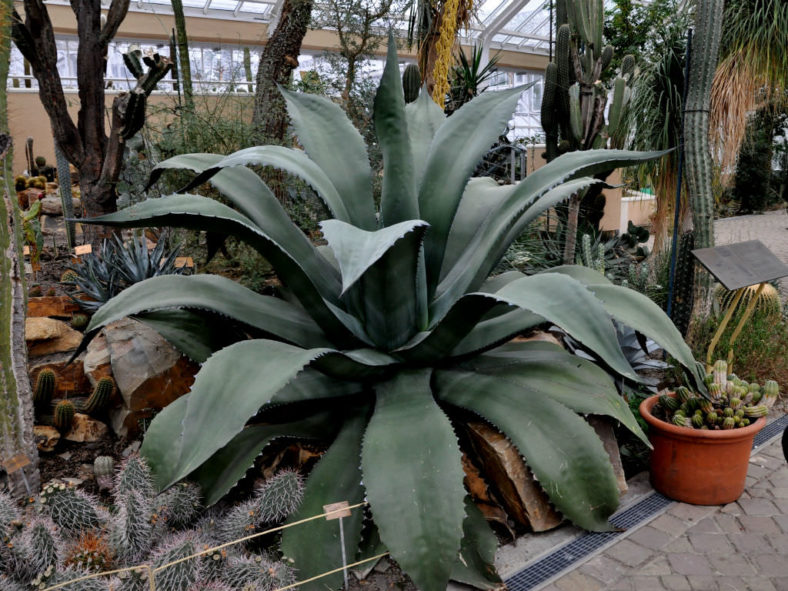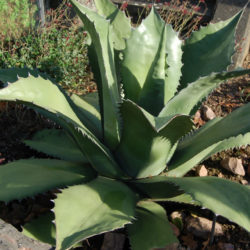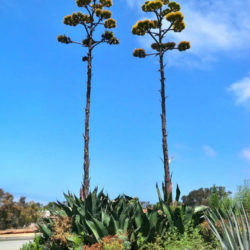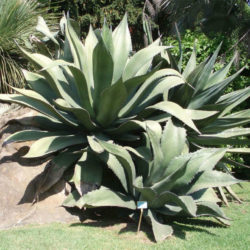Scientific Name
Agave salmiana var. ferox (K.Koch) Gentry
Common Name(s)
Ferocious Pulque Agave
Synonym(s)
Agave bonnetiana, Agave ferox, Agave tehuacanensis
Scientific Classification
Family: Asparagaceae
Subfamily: Agavoideae
Genus: Agave
Description
Agave salmiana var. ferox is an impressive succulent that forms urn-shaped rosettes of broad grey-green leaves armed with brown to grayish-brown marginal spines and a long terminal spine. The rosettes can reach up to 11.5 feet (3.5 m) in diameter. The leaves are lance-shaped, arching out from the center of the rosette, up to 6.6 inches (2 m) long and 14 inches (35 cm) wide. The terminal spine is up to 3.2 inches (8 cm) long.
This variety is distinguished from Agave salmiana var. salmiana by the thicker and stiffer leaves, sharper marginal spines, and longer terminal spine.
The mature rosettes produce a candelabra-like, up to 30 feet (9 m) tall spike with clusters of bright yellow flowers. Fruits are woody, brown capsules with black, tear-shaped seeds. Each rosette blooms once, usually after ten years, and dies.
Origin
Agave salmiana var. ferox is native to central and southern Mexico.
Etymology
The varietal epithet "ferox (FER-oks)" means "warlike" and refers to sharp marginal spines.

Hardiness
USDA hardiness zone 8b to 11b: from 15 °F (−9.4 °C) to 50 °F (+10 °C).
How to Grow and Care
Agaves are not difficult plants to grow. They're slow-growing and dramatic and will even thrive on a bit of neglect. If you're the type of person who likes to fuss with houseplants and water a lot, Agave is probably not the plant for you. If, however, you're the type of person who likes to set it and forget it, and you have a sunny window, Agave might be the way to go. Be aware that some large varieties will eventually outgrow your room (unless you have a large greenhouse), and Agave can be aggressive. They have irritating sap and sometimes very sharp thorns that can cause injuries to small children and even pets.
In general, Agaves do not need to be repotted every year. Most species commonly found in cultivation grow slowly and take a long to outgrow their pot. It's also best to handle your Agave as little as possible since they do not like to be disturbed. When you do repot, refresh the spent soil with a new potting mix and make sure the plant is firmly anchored in its pot. However, be careful not to pot the Agave too deep, which will encourage stem rot during the growing season.
See more at How to Grow and Care for Agave.
Links
- Back to genus Agave
- Succupedia: Browse succulents by Scientific Name, Common Name, Genus, Family, USDA Hardiness Zone, Origin, or cacti by Genus


